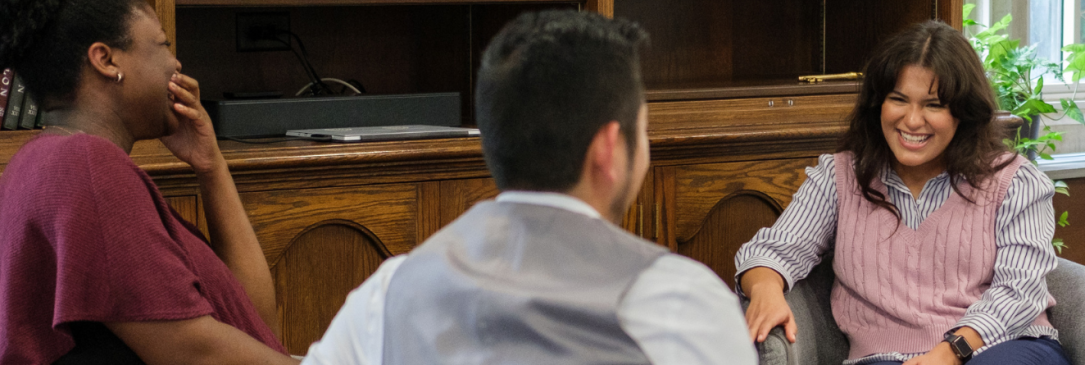Free Guided Meditations (The Center for Kory Mindfulness, 2017): The Koru Mindfulness® program was developed over the course of a decade by psychiatrists Holly Rogers, M.D., and Margaret Maytan, M.D., to bring the benefits of mindfulness to the college students they worked with at Duke University’s student counseling center. Stream their free guided meditations to help you with your meditation practice. These free guided meditations will help anyone who is looking for guided help in their meditation practice. To learn more about The Koru Mindfulness program click here.
Guided Imagery (The Ohio State University Wexner Medical Center, 2017): Guided imagery practices can help students relax; improve sleep; prepare for surgery; experience greater clarity, compassion, and gratitude; and feel more calm, confident, and comfortable. Ohio State Integrative Medicine offers the following free guided imagery recordings. Some specific meditations that align with the Center for Student Diversity and Inclusion’s mission include:
- Accessing Inner Intuition and Wisdom (Patrice Rancour, M.S., RN, PMHCNS-BC): This “mountain meditation” exercise can help you access your inner intuition and wisdom to guide you on the road to health and healing.
- Autogenic Training (Kathi Kemper, M.D., MPH): Autogenic training is a simple practice of sitting or lying quietly while repeating a series of six phrases that elicit relaxation and ease. This guided practice is adapted from Autogenic Training by Dr. Kai Kermani. A 2002 meta-analysis of over 60 studies published on autogenic training concluded that this practice can offer significant benefits for people with headaches, including migraine headaches; mild-moderate hypertension; asthma; anxiety; depression; and insomnia.
- Comfort in the Face of Pain and Loss (Patrice Rancour, M.S., RN, PMHCNS-BC): This practice helps us re-connect with a lost loved one, developing compassion, patience, comfort, and warmth.
- Easing Pain (Patrice Rancour, M.S., RN, PMHCNS-BC): This meditation is adapted from Guided Meditations, Explorations, and Healings by Dr. Stephen Levine. It helps us notice our pain without judgment, breathing into it with curiosity, compassion, softness, and space. It can also be used as a mindfulness practice to change our relationship to pain and promote relaxation and ease.
- Life Purpose (Patrice Rancour, M.S., RN, PMHCNS-BC): Welcome home to your wise, inner self. This recording will guide you through symbolic inner rooms to take you deeper and deeper into your own true nature and lead you to the gift to yourself of remembering and affirming your life purpose to help you align your daily activities and become more effective and engaged.
- Safe Place (Kathi Kemper, M.D., MPH): Deeply imagining oneself in a safe, secure place helps create the same physiologic state as actually being in that space. Repeated practice can help promote restful sleep and balanced autonomic and immune function as well as mental clarity and calm, confidence.
- Self-Awareness (Patrice Rancour, M.S., RN, PMHCNS-BC): This practice is adapted from The Power of Kindness: Unexpected Benefits of Leading a Compassionate Life by Piero Ferrucci. This practice can also be considered a mindfulness practice–mindfulness of sensations, thoughts, and emotions–helping us know ourselves as awareness and peace.
- Skill Master (Patrice Rancour, M.S., RN, PMHCNS-BC): Would you like to master a special skill? Many athletes use guided imagery like this to help improve their skill and performance. Practicing this imagery can help you learn and practice a selected skill to help you gain confidence and mastery.
Unhelpful Thinking Habits (Vivyan, C., 2009): Over the years, we tend to get into unhelpful thinking habits such as those described below. We might favor some over others, and there might be some that seem far too familiar. Once you can identify your unhelpful thinking styles, you can start to notice them – they very often occur just before and during distressing situations. Once you can notice them, then that can help you to challenge or distance yourself from those thoughts, and see the situation in a different and more helpful way.
